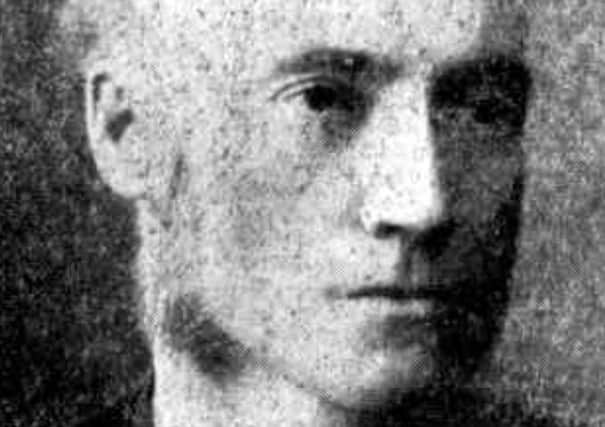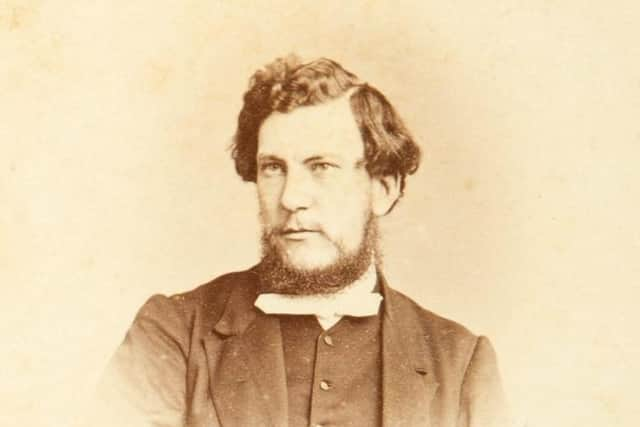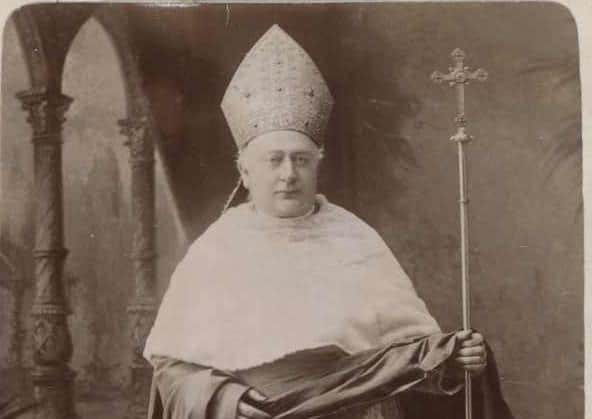Ulster Presbyterian churchman in Oz was known as ‘Fighting Larry’


A short note with an accompanying document which was sent a few weeks ago is a prime example - the e-mailer wrote “great quote in second paragraph... irresistible!
The quote was about “a church organ and thruppences” and without a moment’s hesitation I turned to the aforementioned second paragraph.
Advertisement
Hide AdAdvertisement
Hide AdIt was about the Rev John Laurence Rentoul, a Presbyterian minister from Garvagh in charge of a church in Australia in 1881.


He had “an organ, a choir, and an anthem to drown the jingling of the thruppences” and there was much, much more to discover about him - all ‘irresistible’!
As well as becoming Moderator General of the Presbyterian Church of Australia and Chaplain-General of the country’s army he was a published author and poet, a greatly acclaimed preacher, theologian, academic and University Head “and still found time to prosecute his many disputes” to such an extent that he was known in Australia as ‘Fighting Larry’!
He also retained strong associations with the Orange Order, the Victorian Peace and Humanity Society, the Irish Land League, the Home Rule movement in Ireland and loved gardening, reading and fishing for trout!
Advertisement
Hide AdAdvertisement
Hide AdTo call the Rev John Laurence Rentoul ‘an all-rounder” or “multi-talented” would evidently be a brazen understatement, and I most liked him being described as a “controversialist” in the opening words of the short biography which the reader sent to me.


John Laurence Rentoul was born on 6 July 1846 in Garvagh, Londonderry, the fourth son of Rev. James Buchan Rentoul and his wife Sarah, née Wilson.
John’s father and grandfather were Presbyterian ministers, the latter having originally come here from Scotland, apparently
to promote unity among Irish Presbyterians.
Rentoul read Law at Queen’s College (later University) Belfast, graduating with a B.A. in 1867 and an M.A. with first-class honours a year later.
Advertisement
Hide AdAdvertisement
Hide AdAfter postgraduate studies in theology at Leipzig in Germany he was ordained as a Presbyterian Minister in England in 1872, in St George’s Church, Southport, Lancashire.
The well-known London clergyman Rev Oswald Dykes, an adviser to the colonial Church, nominated Rentoul as minister to the similarly named St George’s Church, East St Kilda, Melbourne.
He arrived there in 1879 with his wife Annie Isobel, who he’d married in Southport the previous year.
His stipend was £800 per annum.
When his student friend, Omagh-born (Sir) John MacFarland, followed him in 1881 to take up the post of master of the newly established Ormond College at the University of Melbourne, he was struck by the contrast between the forms of religion in their native Ulster and those in Rentoul’s thriving new church.
Advertisement
Hide AdAdvertisement
Hide AdMacFarland noted “he has an organ, a choir, and an anthem to drown the jingling of the thruppences!”
But there was a fierce conflict within the Presbyterian Church of Victoria, between scholastic Calvinists who clung to the orthodoxies of the Westminster Confession and liberals who disagreed with adhering to very specific doctrines, liturgical practices and church traditions.
Like every true Ulsterman, Rev Rentoul became embroiled in the debate, taking a theological position which he described as the “liberal faith of an evangelical broad churchman”.
He became Professor of Biblical Languages and Christian Philosophy at Ormond College, having been made a Doctor of Divinity by the Theological Faculty of Ireland in 1884. In 1906 he became Principal of the College’s Theological Hall and lived in one of the residences in the Ormond grounds until his death in 1926.
Advertisement
Hide AdAdvertisement
Hide AdHe always stressed that candidates for the ministry ought to have a broad education in the humanities, and sought to communicate his own love of literature. For more than 40 years he lectured several hours each morning, attended to pastoral duties and correspondence each afternoon, preached widely and still found time to prosecute his many disputes.
“It is difficult to summarize the full range of causes Rentoul took up and more difficult to discern a consistent pattern” wrote a biographer.
He was a critic of the Roman Catholic Church and was sometimes associated with the Orange lodge; he was a close friend of Archbishops Carr and Mannix, two Irish-born Roman Catholic archbishops of Melbourne; he supported Home Rule during the 1890s, he delivered the St Patrick’s Day address in Melbourne in 1901 and he opposed the establishment of the Irish Free State!
He was a pacifist and on the outbreak of WWI he became Chaplain-General in the Australian Imperial Force and urged conscription for overseas service.
Advertisement
Hide AdAdvertisement
Hide AdHe campaigned vigorously for the teaching of scripture in government schools and urged that love and charity should guide the nation in its provisions for the poor, the criminal, the Aborigine and the worker.
He loved public debate and was nicknamed “Fighting Larry” for his powerful use of words, though admitted in 1912 “people think it is a great compliment to me to say that I am a great fighter, but I can honestly say that I never fight willingly … I fight only when I must.”
He was appointed O.B.E. in 1920.
His dying words when he collapsed in a Melbourne railway station on 15 April 1926 were an apology for the inconvenience he caused to the porter who tended him. He was buried in St Kilda cemetery. His wife and children survived him.